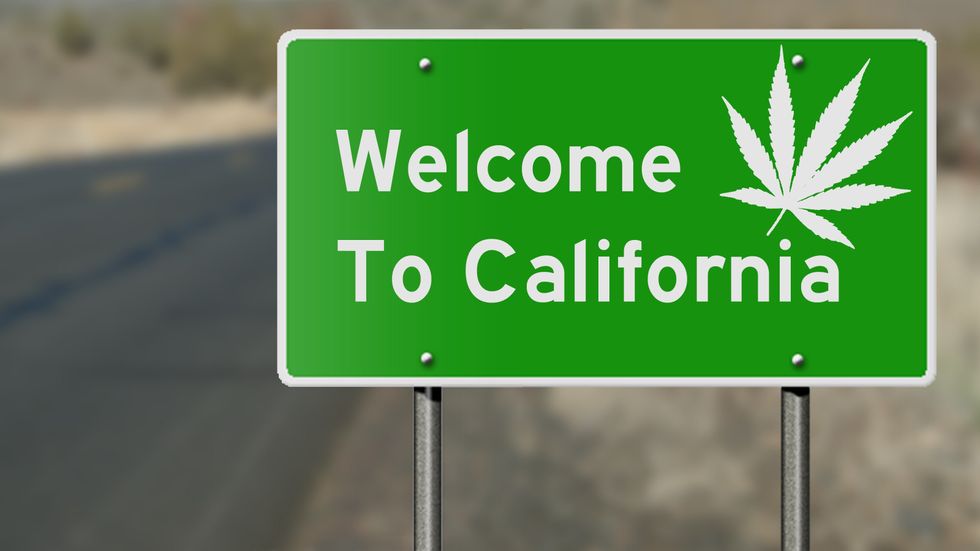Cannabis in California | as “Adult-Use” Continues, So Does The Booming Black Market
Update: Despite the fact that adult-use cannabis has been made fully legal in the state of California (since 2018), the black market continues to thrive.
Why Does California’s Illegal Cannabis Market Persist?
- Super High Taxes
- Over-regulation
- Unreasonably High Barrier To Entry
Before California legalized recreational marijuana use in January 2018, medical dispensaries were the primary provider of the state’s legal weed. The question of how these dispensaries got their supply however, was always a bit murky considering there weren’t many legal channels during this time. With the introduction of the Medical and Adult Use Cannabis Regulation and Safety Act, California has addressed this issue, enacting strict regulatory measures that pot growers must follow if they want to legally sell their crops. Marijuana farmers in California need to have their weed lab tested and must apply for a series of permits before they can begin their business. Unfortunately, many small-time growers have invested thousands of dollars into their businesses just to find themselves stonewalled by bureaucracy. To make matters worse, the sales tax on marijuana is as high as 45% in some areas, limiting dispensaries’ ability to draw in customers. The tax has also had another major side effect in that it’s allowed for the proliferation of illegal weed in California to continue.
With the current taxes and restrictions on legal weed, it’s not particularly surprising that illegal marijuana sales have persisted. According to Kenny Morrison, president of the California Cannabis Manufacturers Association, illegal dealers “outnumber [legal companies] five to one.” On top of this, local authorities are allowed to ban cannabis businesses, and about 70% of jurisdictions have already done this. Because of this, the number of marijuana retailers has shrunk by an astounding 60%, and there are only about 400 legal retailers in the entire state. According to Hezekiah Allen, upwards of 25,000 farms have been put out of business as well. Allen estimates the total number of legal farms–that is farms with all of the proper paperwork and licenses–at about 1700.
 California
California
All that said, it isn’t as though dispensaries and grow houses are shuttering their doors all over the state. Many are just operating without permits, not paying taxes and gaming the system. The government, for their part, has been trying to curb the spread of these illegal marijuana distributors, but despite handing out cease-and-desist letters and citations, they seem unclear on how to proceed, even more so since Governor Jerry Brown failed to pass a $14 million program to combat the issue.
According to a report by a cannabis delivery service called Eaze, about 18% of consumers have purchased marijuana from illicit sources since January. Most of them are doing this because of lower prices and lower taxes. The report also stated that ease of access was also a factor, and that many consumers were buying weed illegally because they live in jurisdictions where its sale is illegal. The most revealing statement from Eaze’s report however, is that “a 5% reduction in the overall tax rate in California could move nearly a quarter of illicit market supporters (23%) to make only legal market purchases. Conversely, a 5% increase in the overall tax rate in California could drive nearly a third of exclusive legal market consumers (32%) to unlicensed sources.” Considering the relative ease with which consumers can grow weed and the fact that it’s legal for a California resident to have up to six plants in his/her home, it’s possible that taxing marijuana at a rate commensurate to that of tobacco isn’t viable.C
 California Black Market Cannabis
California Black Market Cannabis
Still, many point to Oregon, comparing the disarray and black market sales that occurred in the months following legalization there to what is currently happening in California. While California’s legal weed market is predicted to make less than what was originally expected, BDS Analytics believe that sales should stabilize soon. Unfortunately, once that happened to Oregon, they began producing more weed than they knew what to do with and growers began selling their excess crops to criminal organizations who in turn sold the weed in surrounding states. So far, authorities in 16 other states have reported seizing marijuana that originated in Oregon. Drug violence is also up on the west coast.
If California is on a similar trajectory to Oregon, it’s only a matter of time before growers start selling to criminals who can move their product over state lines. These black markets and illegal deals turn weed into a dangerous substance by virtue of the fact that illegally moving large quantities of marijuana necessitates the help of organized crime. When a state legalizes marijuana, it essentially creates two industries: a legal in-state industry and an illegal industry based on smuggling weed out-of-state. Without federal legalization, it’s nearly impossible to prevent gangs and cartels from selling pot because for them, nothing’s really changed. There’s just a much larger, legally-grown supply for them to buy and resell. Until there’s a change at the federal level, black market sales will most likely persist.


